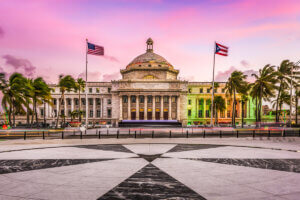Building the CDFI Sector in Puerto Rico
 Puerto Rico’s community development financial institution (CDFI) sector has grown 15-fold over the last decade following a collaboration that brought together leaders from government, community development finance, and Puerto Rico’s credit unions, known as cooperativas.
Puerto Rico’s community development financial institution (CDFI) sector has grown 15-fold over the last decade following a collaboration that brought together leaders from government, community development finance, and Puerto Rico’s credit unions, known as cooperativas.
In 2015, there were six CDFIs on the Island, none of them cooperativas. Today there are 86 cooperativas that are now CDFIs in Puerto Rico.
This is important because CDFIs, which are financial institutions that have been designated as such by the U.S. Treasury Department’s Community Development Financial Institution Fund (CDFI Fund) and which specialize in lending to low- and moderate-income communities, have access to sources of capital other financial firms don’t. Expanding Puerto Rico’s CDFI sector effectively made new capital sources available to the Island’s communities.
Banks and credit unions designated as CDFIs are eligible for competitive federal grants to finance activities, including mortgages for first-time homebuyers, flexible underwriting for community facilities, and commercial loans for businesses in low-income areas. CDFIs can also receive capital from banks, government agencies, philanthropies, and investors.
Between 1996 and 2017, one cooperativa received a technical assistance CDFI grant. Since 2019, 260 grants from different CDFI Fund programs have been awarded to cooperativas on the Island.
Building Lending Capacity
The expansion of Puerto Rico’s CDFIs began with an effort to find out what the Island’s communities needed financially.
As the New York Fed’s Community Development team traveled to Puerto Rico over the years, we heard from community and economic development leaders, capital providers, foundations, and others that the Island needed more flexible capital to respond to the unique needs of local communities in places as diverse as densely populated urban neighborhoods and isolated mountain hamlets. One solution consistently proposed was for a stronger CDFI sector in Puerto Rico, since CDFIs typically provide capital to spur economic development in underserved communities.
In 2015, the Community Development team convened local and mainland stakeholders in San Juan to discuss how to expand the number of CDFIs in Puerto Rico. We brought together representatives from cooperativas; local investors; the association of cooperativa executives, which is known as ASEC; the CDFI intermediary Inclusiv; the Minority Business Development Agency; and the Opportunity Finance Network, which is the national network of CDFIs.
The need for a robust CDFI sector became even more important in the aftermath of Hurricane Maria in 2017. With the support of the New York Fed and other stakeholders in 2018, Inclusiv held its first technical assistance training for cooperativas, which provide access to credit and financial services to primarily low-income and underserved communities and were already in every municipality in Puerto Rico. The training focused on how to apply to become a certified CDFI. That year, four cooperativas that had participated in that first session received a total of $500,000 from the CDFI Fund.
Over the next few years, Inclusiv, working with the New York Fed, organized several more technical assistance training sessions in Puerto Rico, including a CDFI certification program. As a result of these sessions, cooperativas and their staff learned how to successfully seek CDFI designation and apply for CDFI Fund awards.
In 2022, Deutsche Bank Americas Foundation and Inclusiv partnered to make the first large outside investment in the cooperativa sector. Their $1 million capital investment went to Cooperativa de Ahorro y Credito Jesus Obrero (Cooperativa Jesus Obrero), a CDFI in the San Juan suburb of Guaynabo that used the funds to make loans for clean energy, affordable housing, and small business expansion.
In the years since, Inclusiv started the Puerto Rico CDFI Initiative, hired staff on the Island, and began a close and continuing collaboration with ASEC and the Public Corporation for the Supervision and Insurance of Puerto Rico Cooperativas to support the Island’s CDFIs.
That collaboration is important because all but five of the Island’s CDFIs are cooperativas, which have more than 1.1 million members. The sector, which is overseen by the local regulator and excludes federally chartered credit unions on the Island, has total assets of $11.8 billion, $8.2 billion in deposits, and $7.0 billion in loans outstanding.
From the Community Development team’s experience, we’ve learned that bringing together the right people was critical in getting local stakeholders heard on what their communities need and connecting the right organizations and solutions to address those needs. By doing so, technical trainings helped cooperativas with their grassroot connections become CDFI-certified and, as a result bring new sources of funding, like CDFI awards, to underserved communities.
That’s how neighborhoods now see investments like last year’s $20 million loan to Hotel El Conquistador in Fajardo, on the southeast coast of the Island. A group of 16 CDFI cooperativas joined forces to provide the loan, which the lenders say will result in the creation of 1,200 jobs in the region as the hotel expands.
Tony Davis is the director of community outreach and health in the Communications and Outreach Group at the New York Fed. He focuses on issues related to health and economic development.